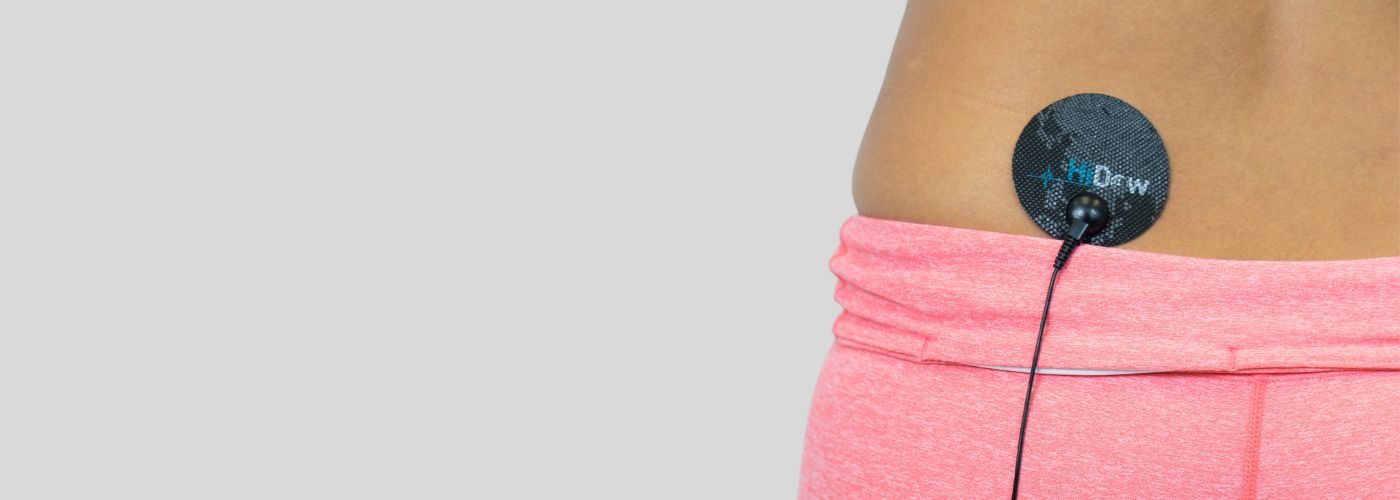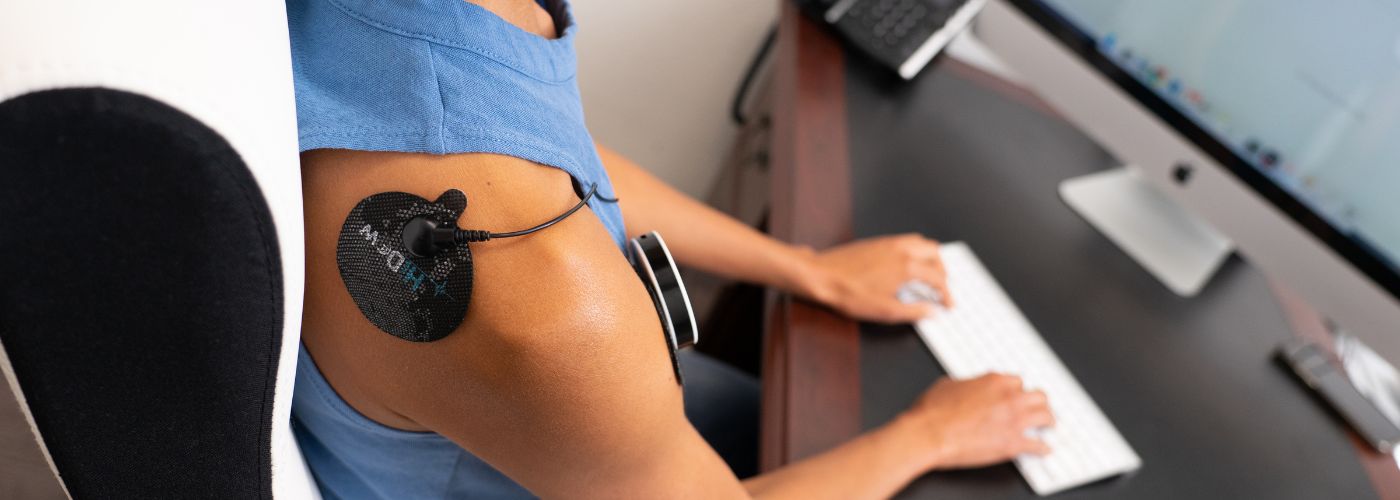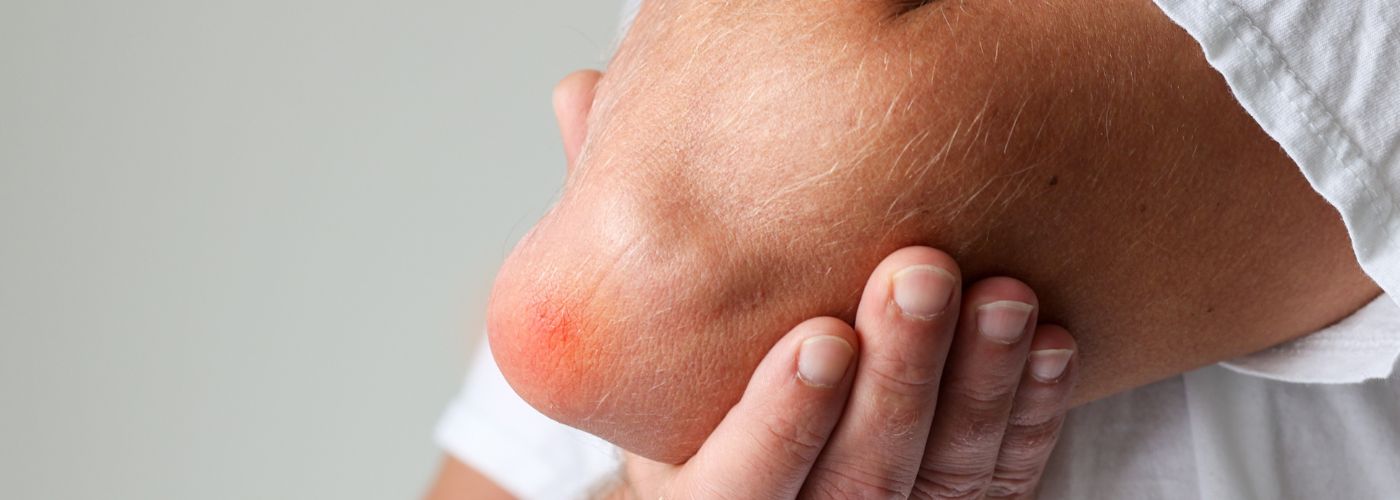Bursitis, a common condition causing inflammation of the bursae sacs in joints, can be a real pain – quite literally. If you find yourself dealing with discomfort and restricted movement due to bursitis, relief may be closer than you think. We’ll talk about how to use a TENS unit for bursitis. We’ll also explore how they can be effectively utilized as a head-on, non-invasive, drug-free option to combat bursitis symptoms.
Is It Good To Use A TENS Unit For Bursitis?
Using a TENS unit for bursitis can be an effective and non-invasive way to manage pain and promote healing. The electrical stimulation provided by the device may help to block pain signals from reaching the brain, providing temporary relief without the need for medication.
Additionally, TENS therapy may improve blood circulation in the affected area, which can help reduce inflammation and promote faster healing.
However, it is important to consult with a healthcare professional before using a TENS unit, as results may vary depending on individual conditions and severity of symptoms. While many people find relief with this form of therapy, some individuals may not experience significant benefits.
It’s also crucial to use the TENS unit correctly and follow instructions carefully to avoid causing further harm or irritation to the affected area.
Where To Place A TENS Unit For Hip Bursitis
When dealing with hip bursitis, knowing the correct placement of a TENS unit can greatly enhance its effectiveness in providing pain relief.
To target the affected area directly, it is recommended to place the TENS unit electrodes around the hip joint where you are experiencing the most discomfort. This can be on the front, back, or sides of the hip, depending on your symptoms.

Many people find it helpful to experiment with different electrode placements to find what works best for them. Some may benefit from placing electrodes both above and below the hip joint to cover a wider area and ensure optimal pain relief.
Additionally, adjusting the intensity levels and settings on your TENS unit can also play a key role in managing hip bursitis symptoms effectively. Remember that consistency is key when using a TENS unit for hip bursitis, so finding the right placement and settings for your specific needs can make all the difference in your pain management journey.
How To Use A TENS Unit For Knee Bursitis
When dealing with knee bursitis, using a TENS unit can be an effective way to alleviate pain and promote healing.
Start by placing the TENS electrode pads around the affected area on your knee, ensuring they are properly positioned for optimal results. Adjust the intensity level of the TENS unit to a comfortable yet effective setting, making sure not to overstimulate the area.
Next, try different pulse settings on the TENS unit to find what works best for your pain relief needs. Experiment with both frequency and duration of sessions to determine what provides you with the most relief.
Don’t hesitate to consult with a healthcare professional for guidance on using a TENS unit specifically for knee bursitis. The combination of proper placement, intensity adjustment, and personalized approach can make a significant difference in managing your knee bursitis symptoms effectively.
How Does A Bursitis TENS Unit Reduce Inflammation?
Understanding how a TENS unit works is simple! Electrical impulses generated by the TENS unit stimulate the nerves in the area where the electrode pads are placed, triggering the release of endorphins, which are natural painkillers.
These endorphins not only help to mask the sensation of pain but also work to decrease inflammation by blocking pain signals sent by nerves to the brain.
Additionally, the electrical stimulation from a TENS unit may improve circulation in the affected area. Increased blood flow helps to speed up the healing process by delivering oxygen and nutrients to damaged tissues while removing waste products more efficiently.

This enhanced circulation can reduce swelling and inflammation associated with bursitis, promoting quicker recovery and improved overall function of the affected joint or tendon.
How Long Should I Use A Bursitis TENS Unit?
When using a bursitis TENS unit, the duration of usage can vary depending on individual needs. It is recommended to use the TENS unit for about 20-30 minutes at a time, multiple times a day if needed.
However, it is important to consult with a healthcare professional or physical therapist to determine the specific duration and frequency that would be most beneficial for your condition.
Long-term use of a TENS unit for bursitis may help manage pain and inflammation effectively. Some individuals find that using the device consistently over several weeks or months provides better results in reducing discomfort and improving mobility.
Ultimately, the length of time you use a bursitis TENS unit will depend on your own response to treatment and what works best for managing your symptoms.
Can A TENS Unit Cure Bursitis?
While a TENS unit can provide temporary relief from bursitis pain, it is not a cure for the condition.
Bursitis is typically caused by inflammation of the bursae, which are small fluid-filled sacs that cushion the bones, tendons, and muscles near joints. While TENS therapy can help manage pain and improve mobility in some cases, it does not address the underlying cause of bursitis.

It is important to consult with a healthcare professional for a proper diagnosis and treatment plan for bursitis.
In addition to using a TENS unit for symptom management, treatment options may include rest, ice, physical therapy, anti-inflammatory medications, corticosteroid injections, or in severe cases surgery.
By combining various treatments tailored to the individual’s needs, patients with bursitis can effectively manage their symptoms and may improve their quality of life.
What Are The Disadvantages of Using A Bursitis TENS Unit?
One potential disadvantage of using a TENS unit is that TENS units may only provide temporary relief and not address the underlying cause of bursitis or other hip pain.
Additionally, if used incorrectly or for extended periods of time, TENS therapy can lead to skin irritation or burns due to the electrical stimulation. To prevent this, it’s best to clean the electrode pads and the targeted skin area to minimize irritation.
Another drawback is that TENS units may not be suitable for everyone with bursitis, as individual responses to this type of therapy can vary. Some people may find that TENS treatment exacerbates their pain levels rather than providing relief.
It’s important to consult with a healthcare professional before using a TENS unit to ensure it is safe and appropriate for your specific condition.

Related Stories
When Courage Takes Flight: Lessons From a Women’s Skydiving Record Attempt
Photo by Taylor Buffington (T-Buff) We went to Eloy, Arizona on a mission — to...
Nov
Sciatica: 1, LeBron: 0 (For Now)
File photo: LeBron James #6 of the Los Angeles Lakers. (Photo: Thearon W. Henderson /...
Oct
Pickleball vs. Tennis: The Science of Recovery
For years, tennis was the stand-in for movement: endurance, coordination, and power all at once....
Oct
5 Ways to Support Bone Strength with HiDow
World Osteoporosis Day (October 20) October 20 is World Osteoporosis Day, and chances are, you’ve...
Oct
FDA-Cleared Is a Flex. Here’s Why.
Pulling Back the Curtain You’ve seen it on boxes, on websites, in ads: FDA-cleared. It...
Sep
This Is Fibro. This Is Larry.
September is Pain Awareness Month. And we’re not here to give you medical definitions or...
Sep